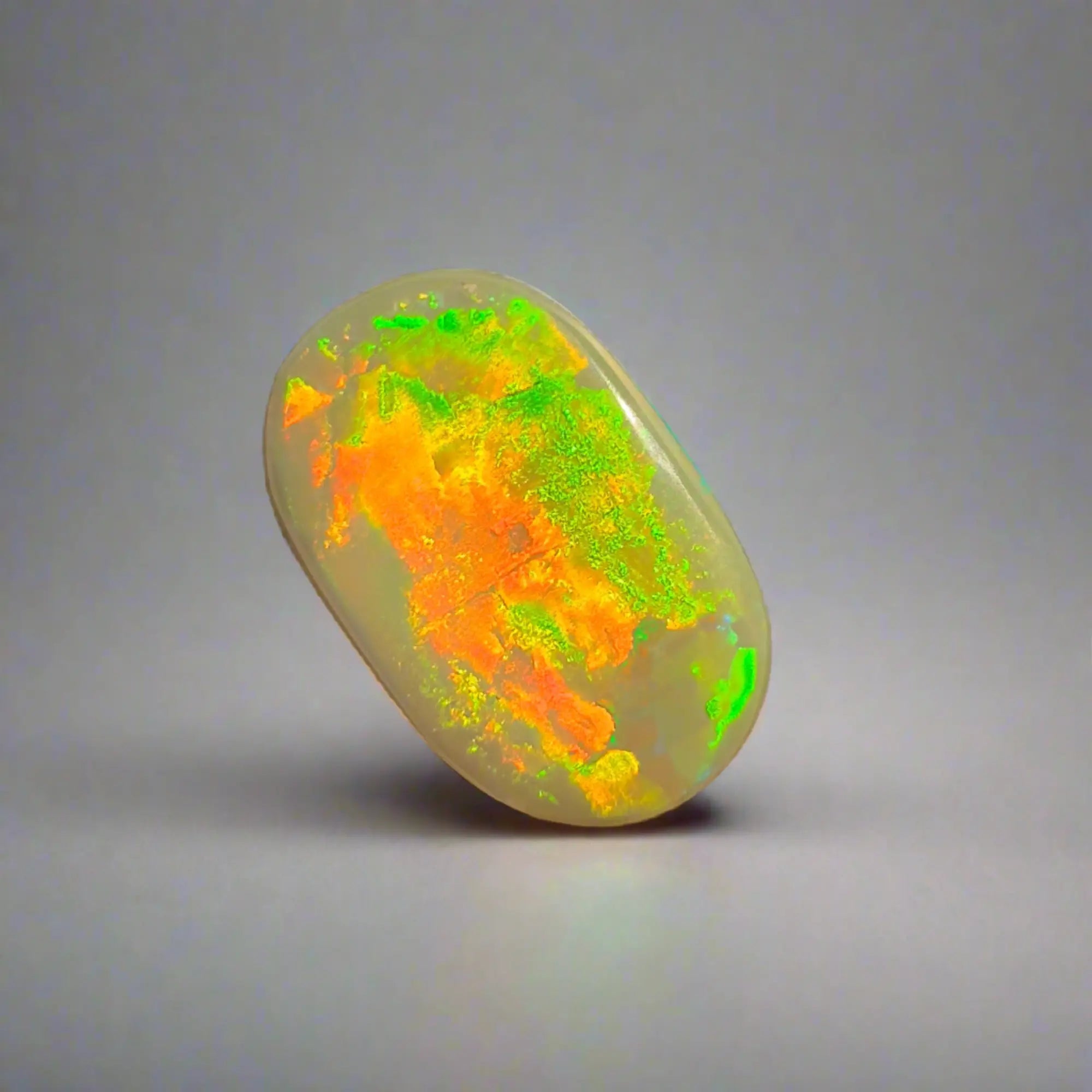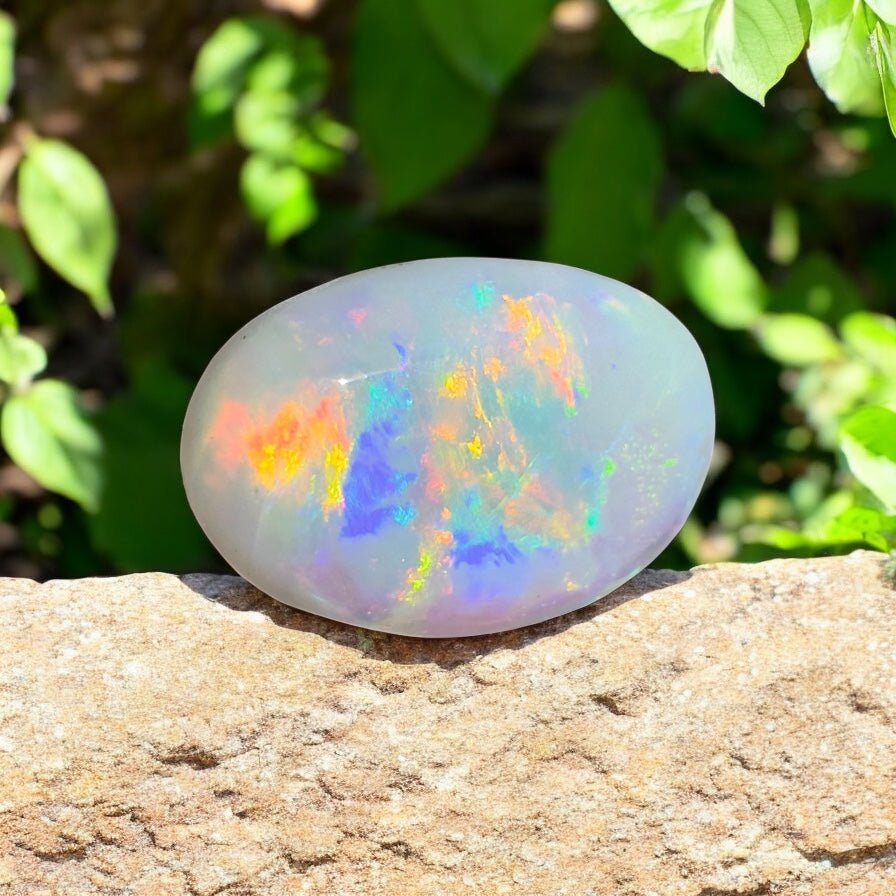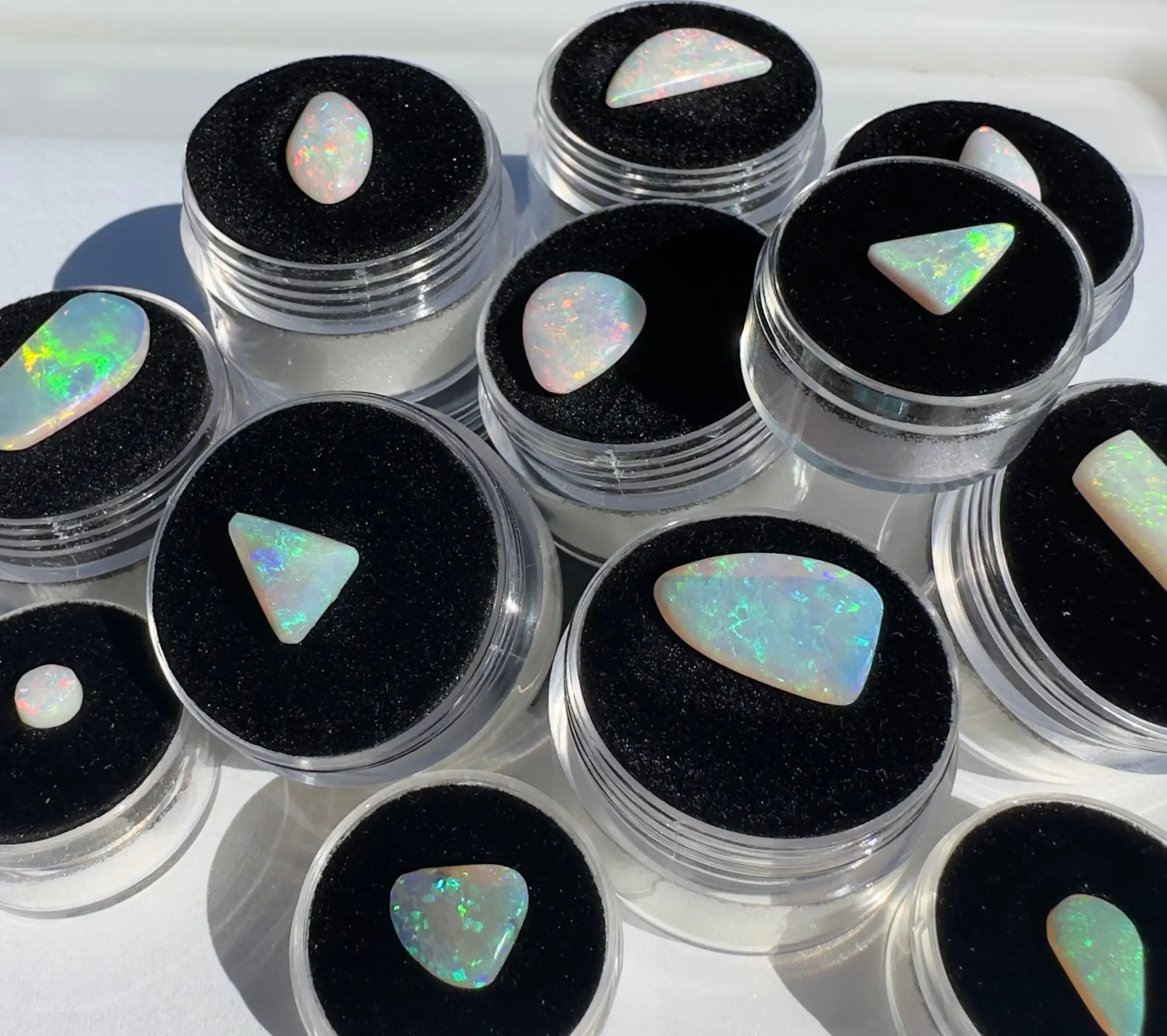
How to Identify Genuine Opals
To the untrained eye, distinguishing between a natural opal and a sophisticated synthetic one can be challenging. The range of artificial opals spans from the obviously fake to the intricately lab-produced. Here are some key identifiers to help you verify the authenticity of your opal.
Differentiating Between Natural and Lab-Created Opals
It's important to understand that lab-produced opals are not necessarily 'fake.' Most lab-created opals replicate the natural formation process as closely as possible but within a shorter timeframe. Synthetic, or 'lab-produced,' opals possess nearly all the same chemical, physical, and optical characteristics as genuine, mined opals. However, some lab opals are modified with additional materials, making them chemically distinct from natural opals.
In the 1970s, The Gilson Company developed a three-step process to produce realistic synthetic opals:
- Creating Microscopic Silica Spheres: These spheres are formed through precipitation.
- Settling Process: The spheres settle in acidic water for over a year.
- Consolidation: The spheres are consolidated with a hydrostatic press, maintaining the stacked arrangement to facilitate the opal’s play of colour.
Lab-created opals are less rare and, therefore, less valuable than natural opals. Guidelines exist to protect buyers from unknowingly purchasing synthetic opals. Fortunately, Australia is home to the world’s largest supply of natural, precious opals, and any credible Australian opal supplier can provide proof of an opal’s origin and type.
How to Spot a Synthetic Opal
There are four primary ways to identify if an opal is synthetic:
- Lizard Skin Effect: Synthetic opals often display a systematic ordering of colour, presenting a 'lizard skin' effect within the colour blocks.
- Colour Structure: When viewed side-on, synthetic opals show neatly lined columns and a repeated, uniform pattern. Genuine opals appear solid and irregular from all angles.
- Porosity: Synthetic opals are more porous and less dense than natural opals. This lower density makes them feel lighter. Prolonged exposure to moisture can reveal condensation or water buildup in synthetic opals.
- UV Light Test: Under UV light, synthetic opals do not shine as natural opals do.
Ensuring Your Opal is Genuine
Real opals are not made of glass, plastic, or resin. A genuine opal is a solid stone made of silica. Unless specified as a doublet or triplet, it should not have any foreign material glued or fused to the back. At Iona Opal, we carry solid Australian opal only.
High-quality opal doublets have a genuine opal face with a man-made backing to add weight and substance. Doublets and triplets, also known as 'composite stones,' can be excellent affordable alternatives. It’s essential to be aware of the exact type of opal you’re buying to avoid being overcharged. While doublets and triplets can look nice, Iona Opal recommend investing in solid Australian opal.
A notable marker of natural opal is the even spread of colour across its body. The play of colour should be visible from both the front and side and free of soot marks, which can indicate artificial enhancement through treatments like sugar or smoking.
Distinguishing Real Opals from Imitations
Fake opals, often made from glass, plastic, or resin, can be easier to detect than sophisticated lab-produced ones. Fake opals typically have an overly shiny appearance, with colour flashes repeating in an organised pattern. Viewed side-on, a columnar structure becomes apparent. Real, natural opals possess irregularities, adding to their authenticity and beauty.
Types of Fake Opals:
- Glass Opals: Made from silicate glass with flakes of iridescent film or opalescent glass, mimicking the play of colour in genuine opals.
- Opalite: A type of man-made plastic with an opalescence effect used to create fake opals.
Treated Opals: What to Know
Natural opals that are particularly porous can be enhanced through dye, smoke, sugar, or acid treatment to alter their body colour. For example, a sugar or acid treatment involves soaking an opal in warm sugar water followed by submersion in sulfuric acid, producing dark-coloured particles and stains.
Australia is home to some of the world’s most exquisite and precious opals. To ensure your opal is genuine, ask your supplier for its mining location. Iona Opal provides the mining location of all opals we cut.
Conclusion: The Authentic Opal Guarantee
A real, natural opal should always be accompanied by a statement of its origin. At our company, all our opals are natural, untreated, and ethically sourced, with many mined by the acclaimed Outback Opal Hunters.
Looking for the real deal? Ensure your opal is genuine and enjoy the timeless beauty and allure of this precious gemstone at Iona Opal today.




Leave a comment
This site is protected by hCaptcha and the hCaptcha Privacy Policy and Terms of Service apply.